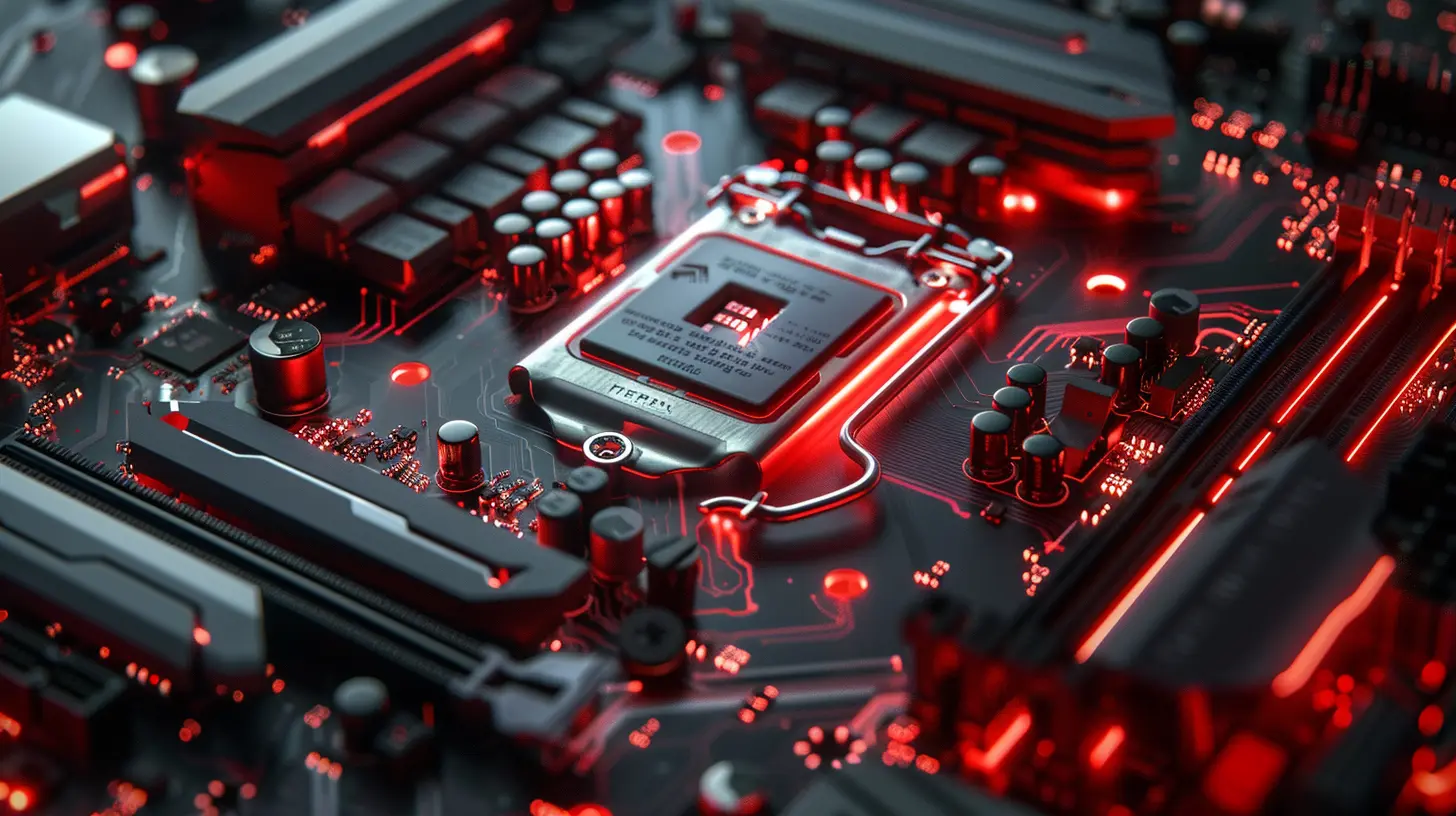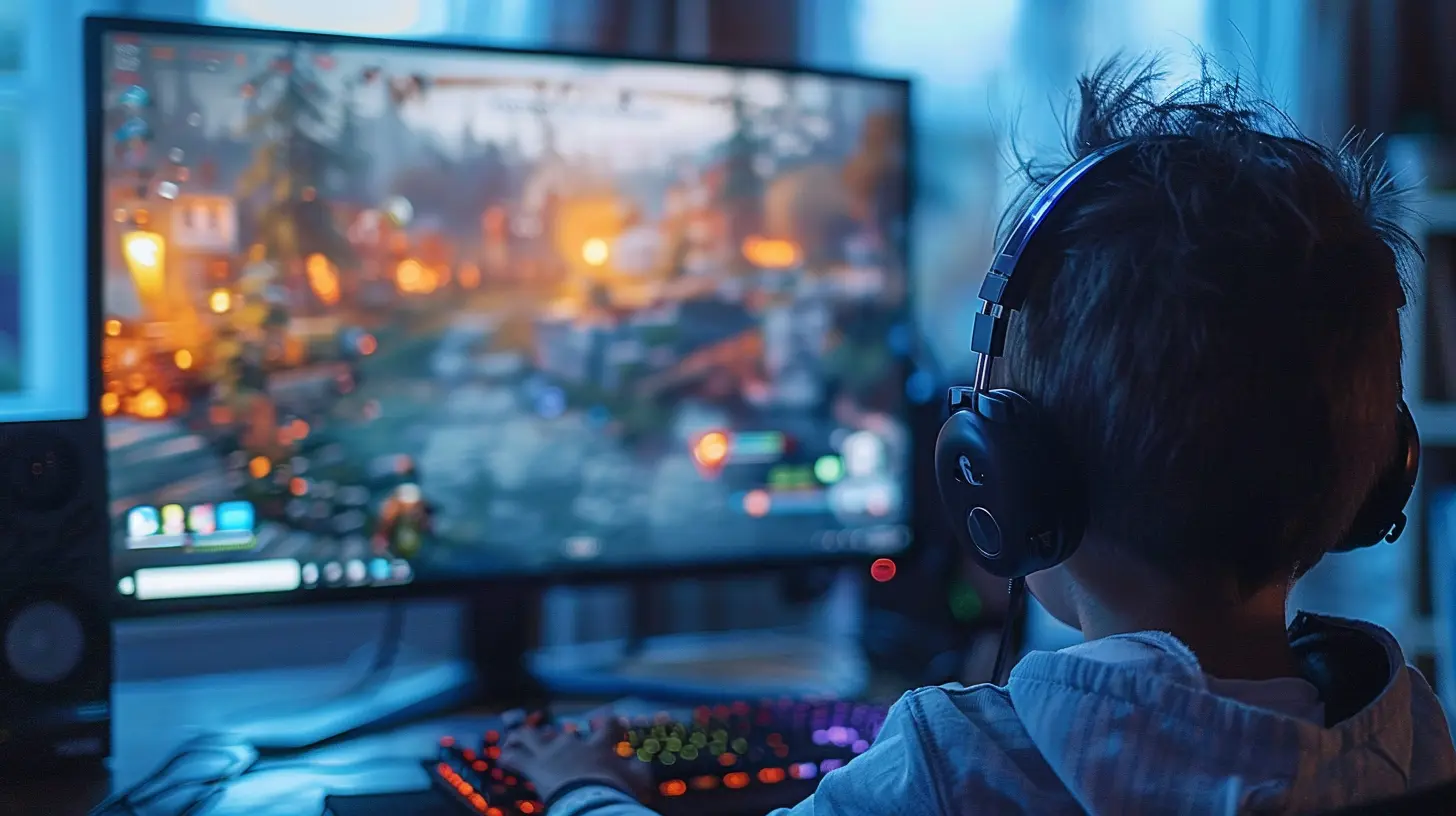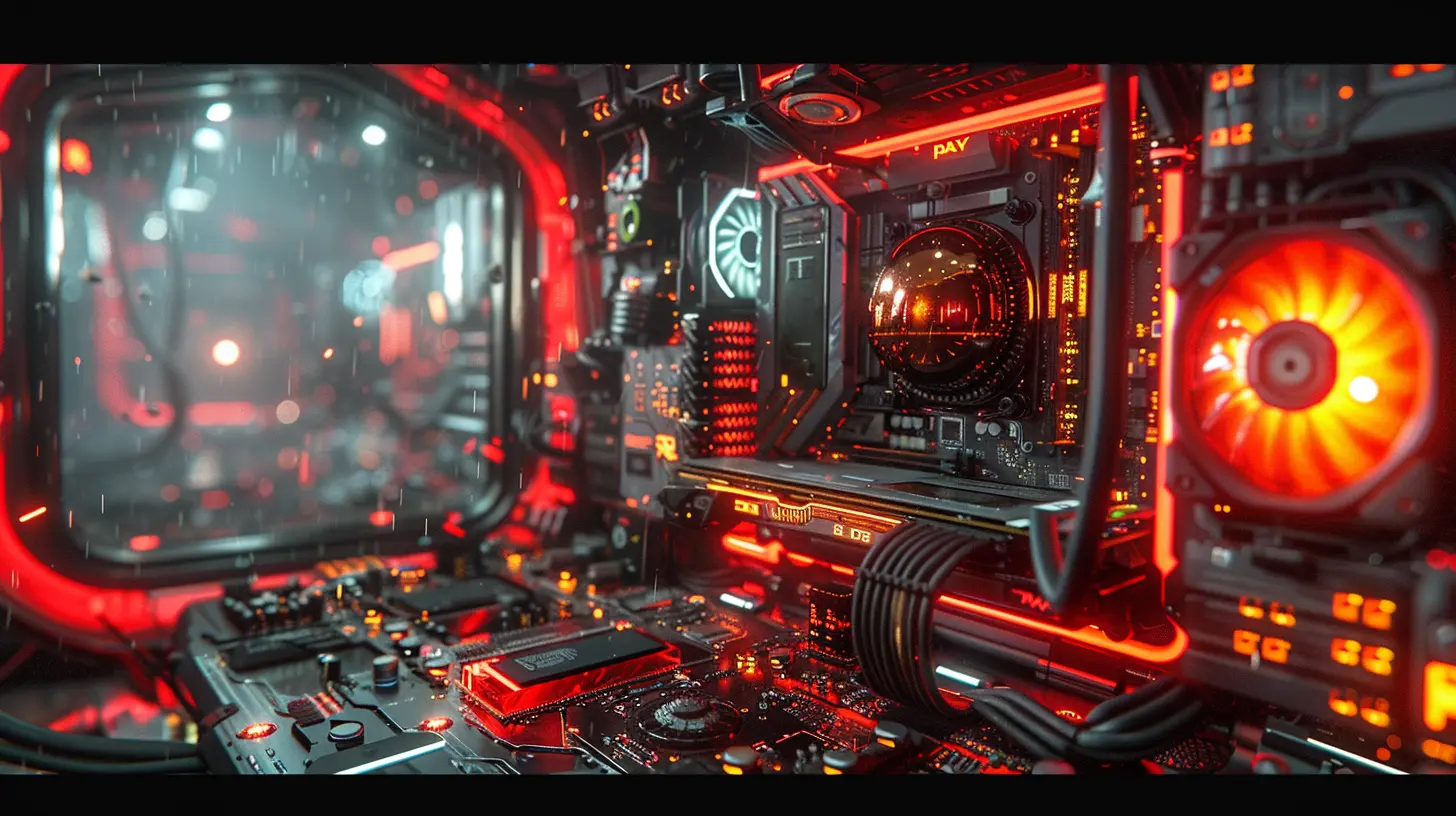How to Optimize Your PC for High-Performance Gaming
15 June 2025
Gaming isn't just a hobby anymore—it's a full-blown art form, a rush of adrenaline, and for many, a passion-fueled escape from reality. But what happens when your immersive digital realms start stuttering, freezing, or lagging like they’re stuck in quicksand? That's where the magic of optimization kicks in.
In this guide, we’re diving deep into the soul of your gaming machine, peeling back the curtain to reveal how to transform an average PC into an elite gaming beast. Whether you're after smooth frame rates, blistering load times, or just a beautifully immersive experience, this is your roadmap to high-performance gaming glory.
🎮 Why Optimize Your PC for Gaming?
Let's face it: No one likes frame drops during an intense boss fight. When your system can't keep up, your immersion—and let’s be honest, your kill streak—dies a painful death. Optimizing isn’t just about speed—it’s about creating harmony between your hardware and software so your games can breathe and shine.Whether you're running AAA titles on ultra-settings or grinding through esports classics, optimizing ensures your experience remains buttery smooth. Plus, it can extend the lifespan of your components and even cut down on those dreaded crashes.
🧠 Step 1: Get to Know Your Hardware
Before you start tweaking, you’ve gotta know what you’re working with. It’s like tuning a race car—you need to know the engine before you can rev it properly.🔍 Check Your Specs
Here’s what you need to look at:- CPU (Processor) – The brain of your operations.
- GPU (Graphics Card) – The visual powerhouse.
- RAM (Memory) – The multitasking wizard.
- Storage (HDD or SSD) – The speed demon (or speed bottleneck).
- Motherboard & Power Supply – The glue that holds it all together.
You can easily check your specs using Windows' built-in tools or third-party apps like Speccy or CPU-Z. Once you know your setup, you’ll know how far you can push it—and where your weak points lie.
⚙️ Step 2: Keep Your Drivers Updated
Think of drivers like interpreters—they help your hardware and software talk smoothly. Outdated drivers are like a broken telephone, sending garbled messages that lead to poor performance and glitches.💡 Focus on These First:
- GPU Drivers: Essential for visuals. Use NVIDIA GeForce Experience or AMD Adrenalin.- Chipset & Motherboard Drivers: Often overlooked but crucial.
- Audio and Network Drivers: Keep gaming immersive and stable.
Check the manufacturer’s website or use auto-update tools that come with your hardware. It’s quick, easy, and can lead to huge performance gains.
🧼 Step 3: Clean Up Your System (Digitally, Not Literally… Yet)
Over time, your PC collects digital cobwebs—unused programs, background processes, and temporary files that slow everything down.🧹 Declutter:
- Uninstall what you don’t use – That free photo editor from 2012? Let it go.- Stop unnecessary startup programs – Use Task Manager’s Startup tab to disable them.
- Clean your disk – Run Disk Cleanup or a tool like CCleaner.
🚗 Think of it like this:
Imagine driving a sports car with the trunk loaded with garbage. Sure, it’ll still move—but not like it was meant to.💨 Step 4: Upgrade, If You Can
Sometimes, optimization has its limits. If your PC is still crawling, it might be time to give it a little makeover.🔧 Most Impactful Upgrades:
- SSD Over HDD: Nothing boosts game load times like switching to a solid-state drive. Seriously, it’s the cheat code for speed.- More RAM: 16GB is a sweet spot for modern games. If you're rocking 8GB, it’s upgrade time.
- New GPU: This one can be pricey, but if you’re still gaming on a 900-series NVIDIA card, your system's begging for a refresh.
Upgrading doesn't mean breaking the bank—there are budget-friendly options that can still deliver a solid punch.
🔥 Step 5: Control the Heat
Gaming pushes your PC’s components hard. When they overheat, they throttle—literally slowing down to avoid damage. So, keeping your system cool is non-negotiable.🆒 How to Chill Out Your System:
- Clean the dust – Especially off your fans and heatsinks.- Improve airflow – Add or reposition fans; go for a front-to-back flow.
- Apply thermal paste – If your CPU’s a few years old, a fresh coat can do wonders.
- Monitor temps – Tools like HWMonitor or MSI Afterburner help you keep an eye on overheating.
Your GPU and CPU love the cold. Keep them frosty, and they’ll reward you with smooth gameplay.
⚙️ Step 6: Tweak In-Game Settings Like a Pro
You don’t need to max out every setting to enjoy gorgeous gameplay. Some tweaks can double your FPS without wrecking the visual vibe.🎯 Settings to Adjust:
- Shadows – High shadow quality eats performance fast.- Anti-aliasing – Lower it down for a big FPS gain.
- Post-processing effects – Pretty, but resource-heavy.
- Resolution Scaling – Lower it slightly if needed.
Use in-game benchmarks or tools like FRAPS to test your tweaks. Small adjustments can have huge returns.
🎮 Step 7: Optimize Windows for Gaming
Windows is versatile, but not always optimized for gaming out of the box. A few system-level tweaks can level up your setup.⚙️ Do This:
- Enable Game Mode – Windows 10/11 has it under Settings > Gaming.- Disable Background Apps – Go to Privacy > Background apps and kill what's not needed.
- Set Power Plan to High Performance – Control Panel > Power Options.
- Turn Off Notifications – Focus Assist is your friend during gaming sessions.
It’s amazing how much smoother your games run when Windows isn’t trying to sync OneDrive or update your calendar mid-match.
✨ Step 8: Overclock—But Carefully
Overclocking is like giving your hardware a shot of espresso. If done right, you’ll see significant performance gains. If done wrong… blue screen of doom.⚡ For the Brave:
- CPU Overclocking – Use BIOS or software like Intel XTU / AMD Ryzen Master.- GPU Overclocking – MSI Afterburner is a go-to.
Always monitor temps and start slow. And remember, stability over speed!
🌐 Step 9: Optimize Your Internet for Online Gaming
Even a high-spec rig can’t save you from lag if your internet sucks.📶 Do This:
- Use Ethernet – Wired beats Wi-Fi every time.- Prioritize bandwidth – Use Quality of Service (QoS) in your router.
- Close background downloads – Steam updates, cloud syncs… kill ‘em all.
- Check server regions – Choose the closest for lower ping.
Fast reaction time isn’t just about your reflexes—it’s about making sure your data gets there first.
🛠️ Step 10: Use Game Boosting Tools
Yep, there’s software designed for this exact purpose. Some clean RAM, others pause background processes, and some auto-optimize game settings.🕹️ Solid Picks:
- Razer Cortex – Easy optimization and cleanup.- MSI Afterburner – For performance tweaking and monitoring.
- NVIDIA GeForce Experience / AMD Radeon Software – For auto-configuration.
These tools are like pit crews for your gaming machine—keeping everything primed and ready to race.
🧪 Bonus Tip: Keep Everything Clean—Physically!
Dust buildup is a silent performance killer. It clogs fans, raises temps, and stresses components.🧽 Quick Cleaning Routine:
- Open your case monthly – Use compressed air, not a vacuum.- Clean peripherals too – Sticky keyboard = sticky gameplay.
- Cable manage – Not just for aesthetics, but improved airflow.
A tidy PC runs cooler, quieter, and better. Treat it like your favorite car—it deserves the upkeep.
🏁 Final Thoughts
Optimizing your PC for high-performance gaming isn’t just about chasing FPS. It’s about creating an experience that pulls you into your favorite worlds without distraction. It’s about taking control of your setup and squeezing out every drop of potential.Your rig should respond to your commands—not stutter and groan under pressure. From software tweaks to hardware swaps, every step you take carves a smoother, faster, and more immersive gaming experience.
So go on, fire up that game. Let your PC purr instead of wheeze. You’ve done the work—now it’s time to play hard, play fast, and play flawlessly.
all images in this post were generated using AI tools
Category:
Pc GamesAuthor:

Greyson McVeigh
Discussion
rate this article
3 comments
Trinity Taylor
Regular maintenance, updated drivers, and optimized settings ensure peak gaming performance.
June 17, 2025 at 3:30 PM

Greyson McVeigh
Absolutely! Regular maintenance and updates are key to maximizing your PC's gaming performance.
Abram Sullivan
Unlock your PC’s gaming potential—feed it pizza and motivational quotes! Performance boosts guaranteed (results may vary, no refunds). Game on!
June 15, 2025 at 4:06 PM

Greyson McVeigh
Haha, love the humor! While pizza and quotes might not directly boost performance, proper optimization will definitely level up your gaming experience. Game on! 🍕🎮
Ryan Kane
To achieve peak gaming performance, prioritize hardware upgrades, optimize software settings, and ensure proper cooling. Regular maintenance and monitoring resource usage can also significantly enhance your gaming experience.
June 15, 2025 at 4:59 AM

Greyson McVeigh
Thanks for summarizing key points! Prioritizing hardware, optimizing settings, and maintaining cooling are crucial for peak gaming performance.



